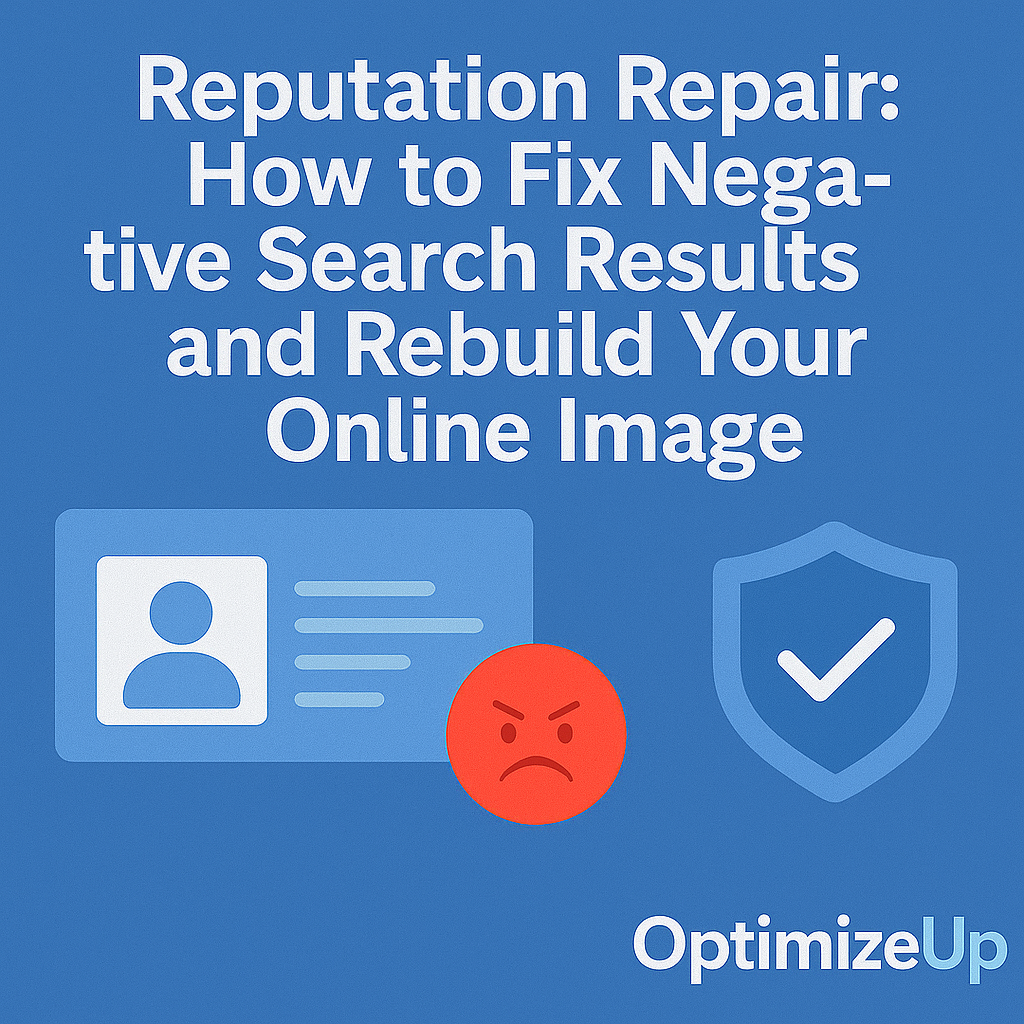In a reputation-first world, search engines are often the gatekeepers to your professional and personal identity. Whether you’re a business owner, public figure, or private individual, unwanted or harmful links on Google can distort how others perceive you. Thankfully, there are actionable strategies to suppress search results and restore your narrative.
This comprehensive guide explores the advanced tactics used to bury negative content, protect your brand image, and reassert control over what shows up when your name or business is searched.
Why Suppressing Search Results Matters
Search engines influence trust. Studies show that over 90% of searchers never click beyond the first page. That means negative content on page one can significantly affect job opportunities, client trust, investment potential, and public perception.
When Suppression Becomes Necessary
- Defamatory articles or blog posts
- Unfavorable press coverage
- Lawsuit listings or mugshots
- Unverified or fake reviews
- Ripoff reports or complaint sites
- Outdated or misleading forum threads
- Politically motivated attacks
- Archived news irrelevant to present circumstances
Suppressing these results isn’t about hiding the truth—it’s about ensuring an accurate, balanced, and fair representation online.
Core Principles of Search Result Suppression
Search engines rank pages based on relevance, authority, engagement, and trust signals. Suppression leverages those same factors by:
- Creating new content that outranks the negative
- Using link-building to boost authority
- Maximizing search engine optimization (SEO) best practices
“The key to suppressing content lies in overwhelming search engines with better, more optimized alternatives.”
Additional Factors That Influence Rankings
- Dwell time: how long users stay on a page
- Bounce rate: whether users exit quickly
- Freshness: newer, regularly updated content tends to perform better
- Rich media: videos and images improve SEO performance
Step-by-Step: How to Suppress Unwanted Search Results
Step 1: Perform a Reputation Audit
Use tools like Google Search Console, SEMrush, or Ahrefs to:
- Identify which keywords bring up negative results
- Analyze their ranking difficulty
- Audit backlink profiles of those pages
Consider leveraging sentiment analysis tools to assess overall tone across mentions.
Step 2: Develop Content that Dominates
Use keyword-rich, high-quality content to overtake negative listings.
Content types that rank well:
- Press releases
- Blog articles
- Guest posts
- LinkedIn and About.me profiles
- YouTube videos
- Podcast interviews
- Whitepapers and eBooks
- Local business directory listings
Each asset should be optimized with schema markup, meta titles, internal links, and image alt tags.
Step 3: Build Authority With Backlinks
Backlinks remain one of the strongest SEO signals. Boost your content by securing links from:
- High-authority blogs
- News outlets
- Local directories
- Forums and communities
- Industry association websites
- EDU and GOV domains if possible
Use BuzzSumo or Hunter.io for outreach and pitching guest content.
Step 4: Leverage Social Profiles
Create and optimize accounts on:
- Twitter/X
- YouTube
- Reddit and Quora (for content sharing)
Social media profiles tend to rank well and are essential in dominating branded search results.
Step 5: Publish on Third-Party Platforms
Leverage publishing platforms with domain authority:
- Medium
- Substack
- Crunchbase
- WordPress
- SlideShare
- Behance
- GitHub (for tech professionals)
Repurpose content across formats for greater reach and varied ranking opportunities.
Step 6: Track and Adjust Strategy
Track progress using:
Update content, build new backlinks, and optimize according to performance every 30-60 days.
Advanced Suppression Techniques
Reverse Image Search Suppression
Use tools like TinEye to find copies of harmful images and file takedown requests.
Wikipedia and Wikidata Optimization
For public figures, optimizing content on Wikipedia or Wikidata can influence knowledge panels and Google SERPs.
Web 2.0 Strategy
Build a network of web 2.0 blogs (e.g., Tumblr, Wix, Weebly) with unique content to create a layered suppression approach.
Legal SEO Approach
Integrate defamation law keywords such as “libel attorney” or “online defamation legal help” to guide those affected toward legal and SEO support.
Pro Tips for Effective Suppression
- Use Long-Tail Keywords: Target terms like “John Doe financial consultant reviews” or “[Business Name] leadership awards.”
- Control SERP Real Estate: Aim to fill at least 7 of the top 10 Google results.
- Utilize Structured Data: Help Google categorize your content accurately.
- Secure Your Brand Name Domains: Purchase relevant domains (e.g., JohnDoe.com) to control web presence.
- Engage in Community Contributions: Answer questions on Quora or Reddit to showcase authority and control more results.
- Implement Brand Mentions Monitoring: Set up tools like Brand24 or Mention for instant notifications.
What to Avoid When Suppressing Search Results
- Do not pay for backlinks: Risk of penalty or de-indexing.
- Avoid content spinning: Google flags it as duplicate and low quality.
- Don’t respond to defamatory content: This can inadvertently boost it.
- Do not engage with trolls: Interactions can make harmful content trend higher.
- Avoid black-hat SEO tricks: These include cloaking, link farms, or automated link building which can backfire.
Tools That Support Suppression Efforts
SEO & Tracking
- Ahrefs
- SEMrush
- Moz
- Screaming Frog
- Google Search Console
- Ubersuggest
Publishing Platforms
- Medium
- Blogger
- Ghost
- LinkedIn Articles
- Behance
- Pinterest (for image-heavy brands)
Outreach & PR
- BuzzStream
- Mailshake
- Prowly
- HARO (Help A Reporter Out)
- Qwoted
- Muck Rack
Case Studies: Suppression In Action
Business Executive with Legal Troubles
An executive faced ranking court documents. A strategic campaign using LinkedIn articles, podcast interviews, and positive media coverage successfully buried those results within 5 months.
Local Business Targeted by Fake Reviews
A local restaurant suppressed fake negative Yelp reviews by optimizing their Google Business Profile, publishing community-driven blog posts, and launching a press release series about their outreach initiatives.
Political Candidate
Faced with an old scandal resurfacing, a political figure ran an aggressive suppression campaign through YouTube, volunteer testimonials, and new press coverage to bury outdated articles.
Frequently Asked Questions
No. Google will only remove content that violates privacy or legal standards. Suppression is your best alternative.
Most campaigns take between 3 to 9 months to yield page-one changes.
Only if maintained. Continuous content creation and link building are essential.
Yes, but it requires SEO expertise, publishing skills, and outreach knowledge.
Absolutely. Suppression uses ethical, white-hat SEO practices.
Yes, but it requires SEO expertise, publishing skills, and outreach knowledge.
Absolutely. Suppression uses ethical, white-hat SEO practices.
Not entirely. The goal is to bury it deep enough that no one sees it.
Suppression pushes content down in rankings; removal eliminates it completely—only possible through legal or platform takedowns.





